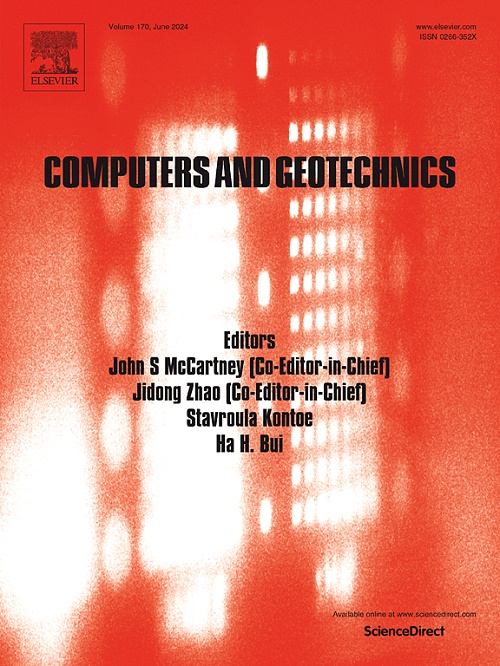Study on the torsion and sway responses of a massless rigid foundation excited by spatial obliquely incident P-waves considering the nonlinearity of the surrounding soil
IF 5.3
1区 工程技术
Q1 COMPUTER SCIENCE, INTERDISCIPLINARY APPLICATIONS
引用次数: 0
Abstract
In this study, the influences of the spatial incidence angles of P-waves and soil nonlinearity on the soil–structure interaction system are investigated. A finite element model of the SSI system is developed using the equivalent nodal force method, viscoelastic artificial boundary, and the revised Davidenkov model to analyze the dynamic responses of a rectangular foundation and its associated structure. The results indicate that the rectangular foundation predominantly exhibits sway responses to spatially oblique incidence P-waves, with a negligible torsion response. Compared with vertically incident P-waves, spatially oblique incident P-waves significantly increase the maximum sway and torsional angles of structural floors. Furthermore, soil nonlinearity increases the sway angle of the foundation and intensifies the maximum torsional and sway responses of the floors. Therefore, soil nonlinearity and the spatial incidence angles of P-waves need to be considered in structural seismic hazard assessments.
求助全文
约1分钟内获得全文
求助全文
来源期刊

Computers and Geotechnics
地学-地球科学综合
CiteScore
9.10
自引率
15.10%
发文量
438
审稿时长
45 days
期刊介绍:
The use of computers is firmly established in geotechnical engineering and continues to grow rapidly in both engineering practice and academe. The development of advanced numerical techniques and constitutive modeling, in conjunction with rapid developments in computer hardware, enables problems to be tackled that were unthinkable even a few years ago. Computers and Geotechnics provides an up-to-date reference for engineers and researchers engaged in computer aided analysis and research in geotechnical engineering. The journal is intended for an expeditious dissemination of advanced computer applications across a broad range of geotechnical topics. Contributions on advances in numerical algorithms, computer implementation of new constitutive models and probabilistic methods are especially encouraged.
 求助内容:
求助内容: 应助结果提醒方式:
应助结果提醒方式:


